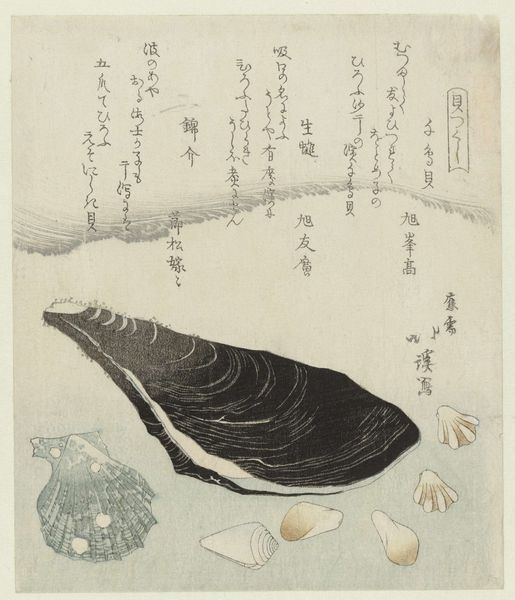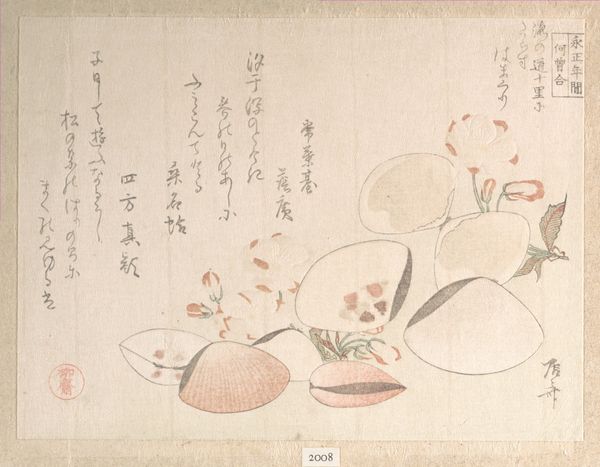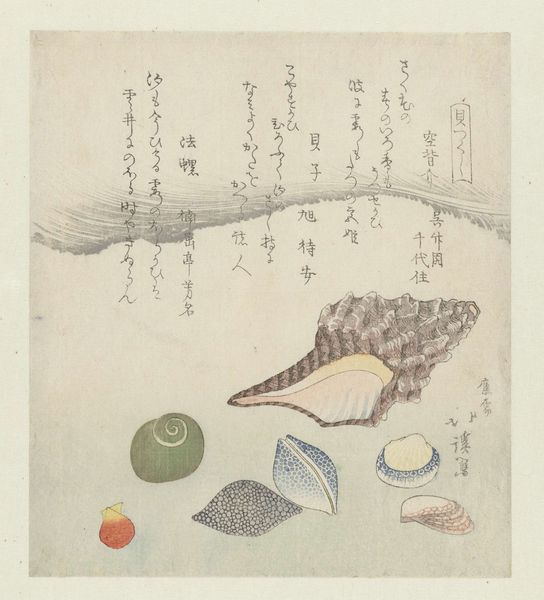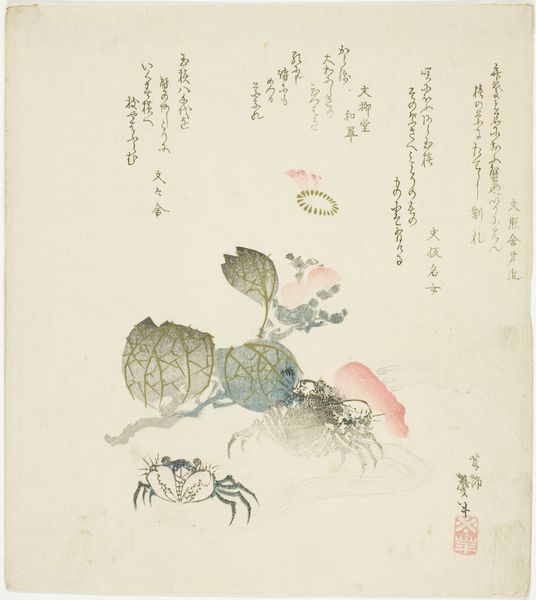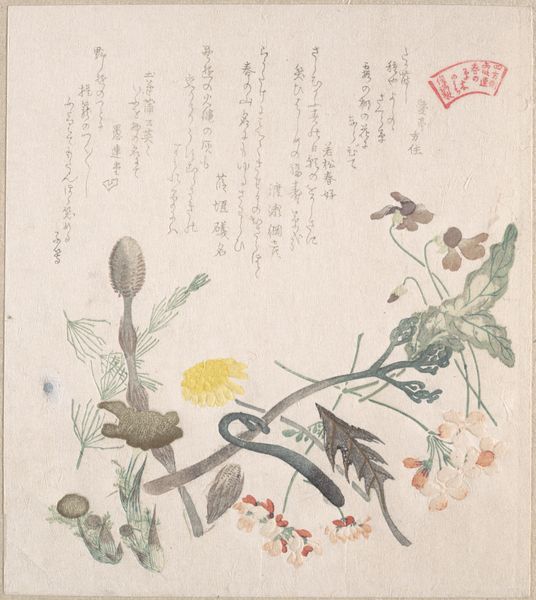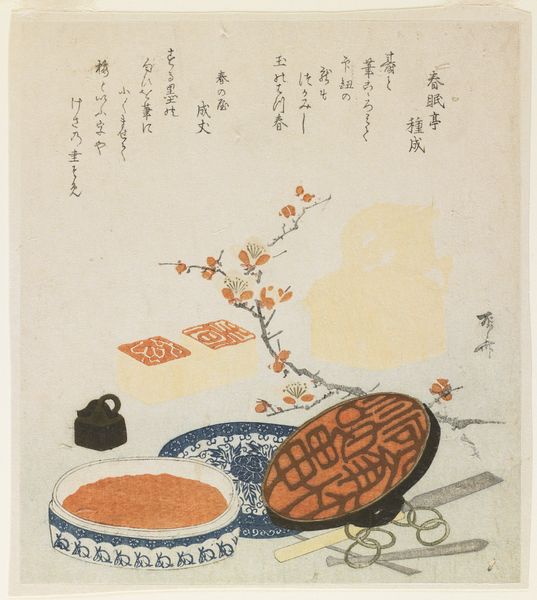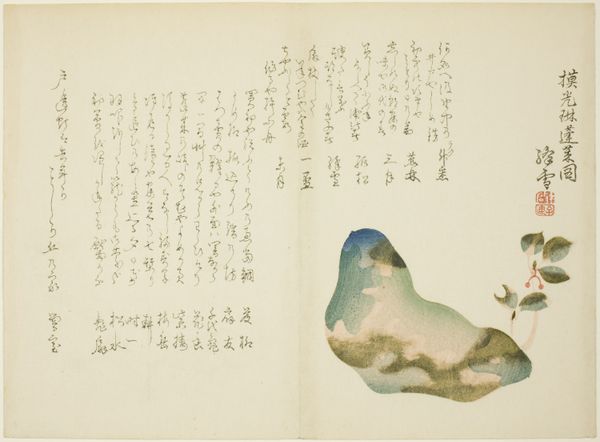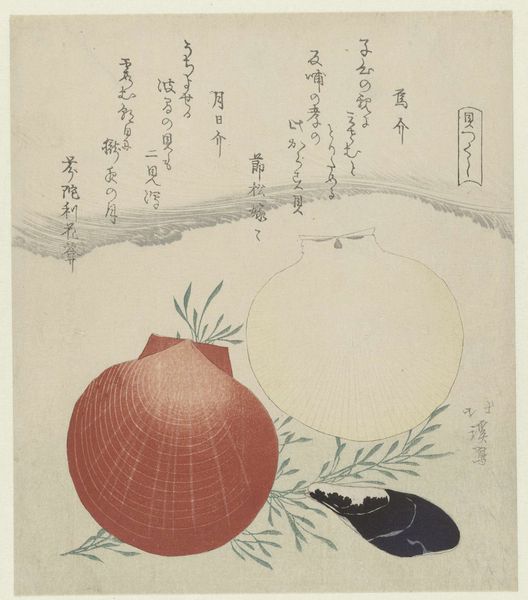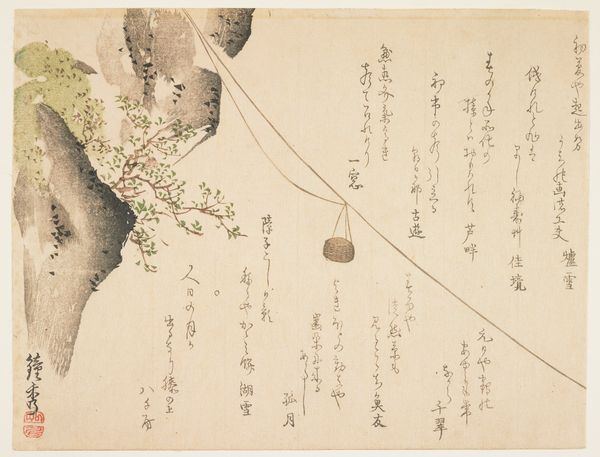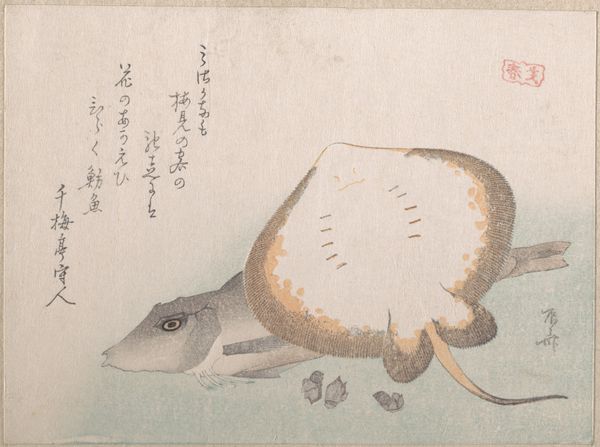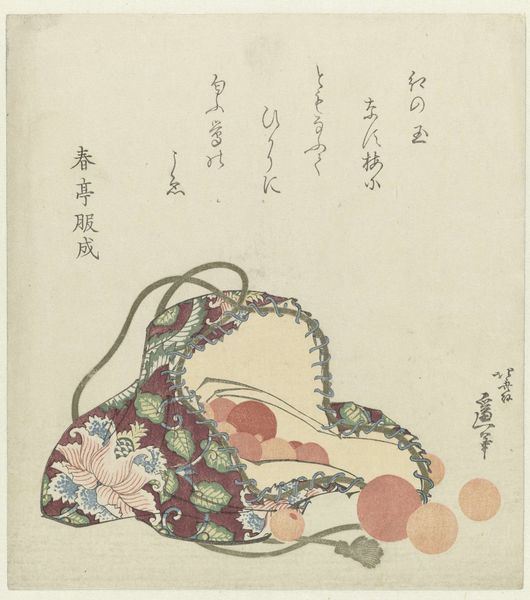
drawing, print, paper, ink, woodblock-print
#
drawing
# print
#
asian-art
#
ukiyo-e
#
paper
#
ink
#
woodblock-print
#
geometric
#
line
#
watercolor
Dimensions: height 209 mm, width 183 mm
Copyright: Rijks Museum: Open Domain
Curator: Look at this gorgeous print: Totoya Hokkei's "Vergeten schelp, pruimenbloesem schelp en kersen schelp," created in 1821. Hokkei rendered it in ink and color on paper, employing the woodblock printing technique popular in the Ukiyo-e tradition. Editor: It's so quiet, so…minimalist. Just the gentle curve of the wave and these delicate shells scattered below. It feels ephemeral, like a fleeting moment captured. Curator: Hokkei’s piece operates within specific visual and poetic conventions. The Ukiyo-e movement, meaning "pictures of the floating world," reflected the lifestyle of the burgeoning merchant class. This work provides an important insight into Japanese society during the Edo period. Editor: Precisely. Shells in Japanese art are highly symbolic, often linked to transience, fragility, and the ebb and flow of life, of course. And beyond this, one wonders, how might these objects, literally found on the shores of Japan, serve to ground Hokkei and his intended audience within that cultural, social, and political matrix? The very act of arranging these specific shells suggests careful curation, maybe even narrative building. Curator: Definitely! The selection and composition are purposeful. Consider how the shells are laid out. They almost seem to form a pathway or suggest a narrative, leading your eye across the artwork. Editor: And consider the contrast between the tangible, earthly shells and the wispy inscription in Japanese calligraphy at the top. Is this perhaps a gesture to connect earthly existence with a spiritual realm or simply just the addition of poems related to shell-matching games "Kai-awase". This connection between materiality and ethereal beauty makes the piece truly remarkable. It triggers, somehow, a deep cultural memory. Curator: Absolutely. Hokkei prompts us to consider our relationship to nature, to history, and to each other. It demonstrates just how effectively he blended social critique with beautiful imagery. Editor: I think you're absolutely right, that merging makes the artwork relevant even now. Curator: And it gives you pause. There are so many layers beneath that serene facade.
Comments
No comments
Be the first to comment and join the conversation on the ultimate creative platform.



